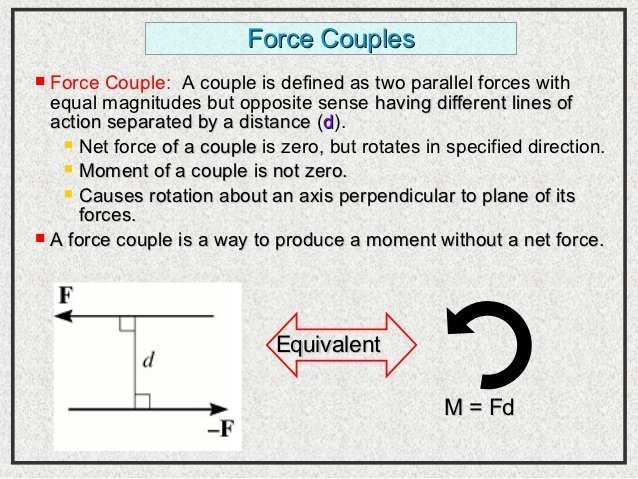Q. Define Couple ?
Two equal and opposite force whose line of action are different forms a couple and produce an rotation.

Q. What is the difference between Centroid and Center of Gravity?

Important Question of Engineering mechanics or Applied mechanics.
Q. Moment of inertia is the:
- second moment of force
- second moment of area (mm2)
- second moment of mass (kg/mm2)
Q. Radius of gyration is the distance where the whole mass or area of the body is assumed to be concentrated (Yes/No)
Yes.
Let’s Understand about Friction ?
Q. Explain Friction ?
Friction: A force acting in the opposite direction of the motion of the body is called force of friction or simply friction.
Friction is classified into two types:
a). Static Friction: Static friction is that force of friction which acts on the body when body in rest.
b). Dynamic Friction: Dynamic friction is that force of friction which acts on the body when the body in motion. Dynamic friction further divided into two types
i) Sliding Friction and ii) Rolling Friction.
Q. Laws of Static Friction:-
- The force of friction always acts in opposite direction of motion.
- The magnitude of force of friction is exactly equal to the force, which tends the body to move.
- The magnitude of the limiting friction bears a constant ratio to the normal reaction between the two surfaces.
- The force of friction is independent of the area of contact between the two surfaces.
- The force of friction depends upon the roughness of the surfaces.
Q. Coefficient of Friction :- It is defined as the ratio of limiting friction to the normal friction between the two bodies. It is generally denoted by µ
Q. Angle of Repose :- It is the angle of inclination of the plane to the horizontal, at which the body just begins to move down the plane.
Q. Laws of Dynamic Friction:-
- The force of friction always acts in opposite direction of motion.
- The magnitude of the kinetic friction bears a constant ratio to the normal reaction between the two surfaces.
- For moderate speeds, the force of friction remains constant. But it decreases slightly with the increase of speed.
Q. Static friction always _________ dynamic friction.
Always greater than.
Q. The ratio of static friction to dynamic friction is always?
Greater than one.
Q. Define angle of Repose?
The angle of the inclination of the plane at which the body begins to move down the plane is called angle of Repose.
Q. Coefficient of friction is the ratio of the limiting friction and the normal reaction between the two bodies. (Yes/No)
yes.